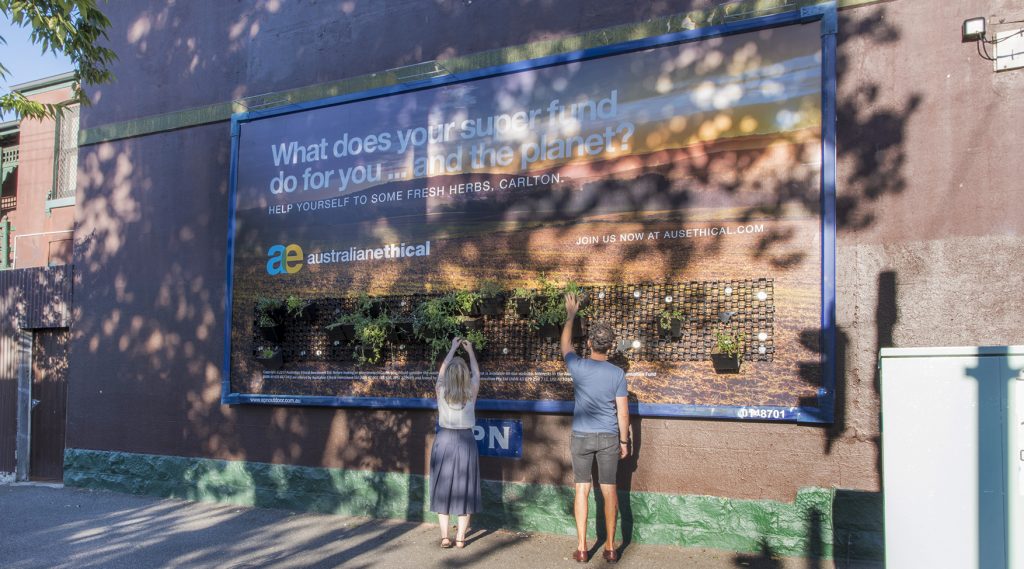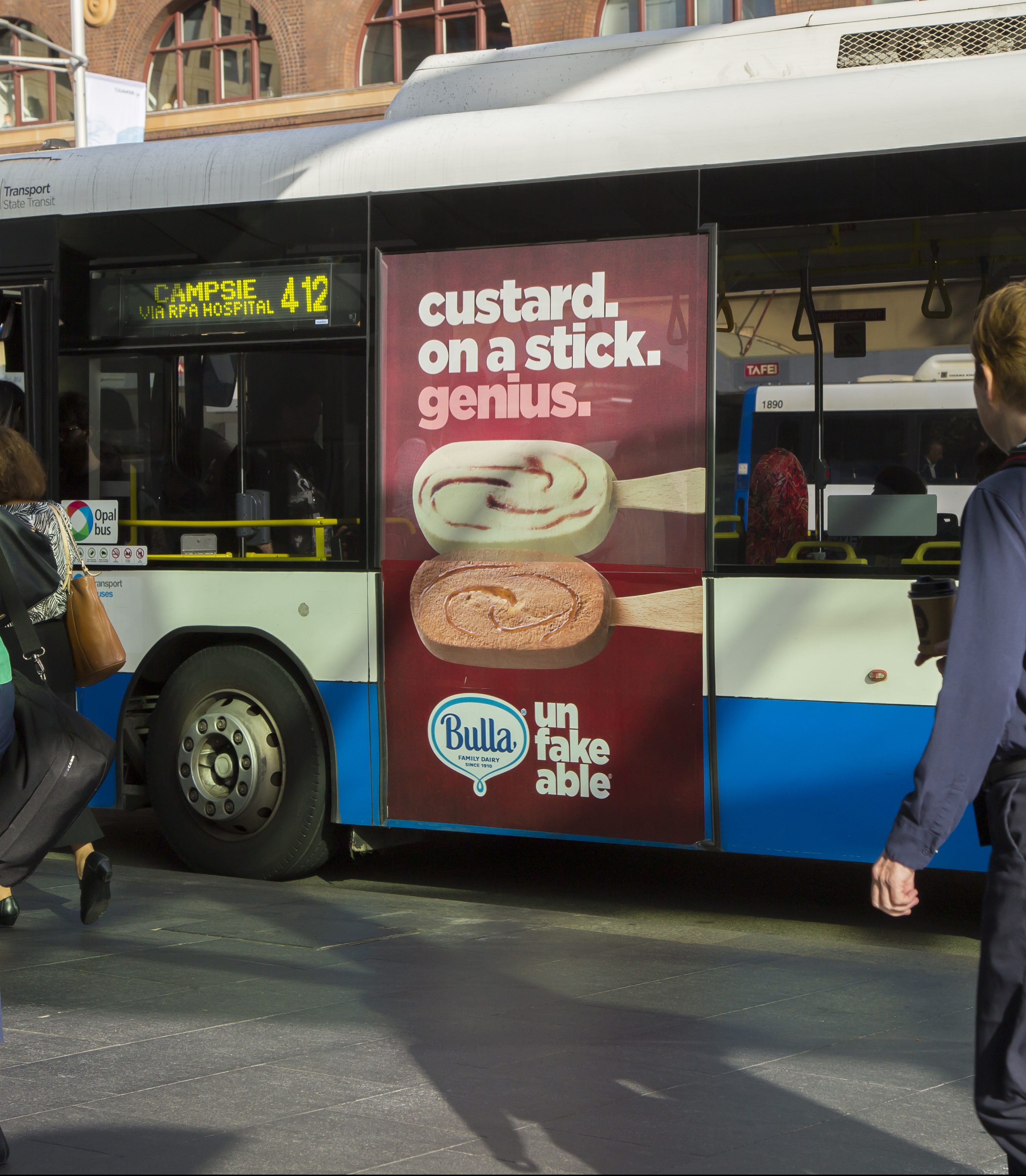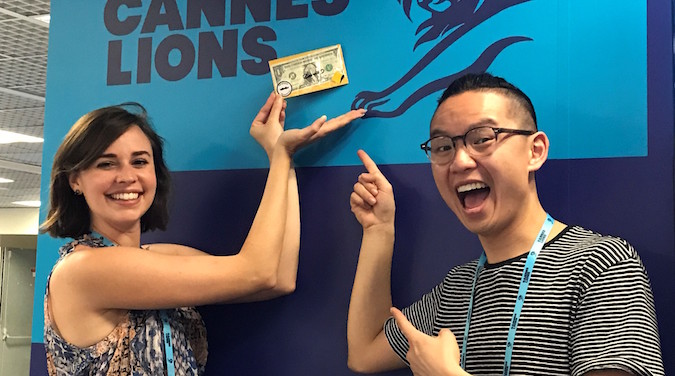Blank canvas: the best out-of-home creative breaks the rules
Share
What do Monet’s impressionist movement and out-of-home advertising have in common? Charlotte Valente explores the creative processes unique to the OOH marketer and the real potential in breaking the rules.
This article was sponsored by APN Outdoor to let readers know about its upcoming Cannes Lens: Creativity in Focus event.
 In the 1900s, when French artist Claude Monet’s impressionist movement sought to challenge the Académie des Beaux-Arts’ perception of realism in art, it was initially rejected by the public. That attitude changed when others began to observe the potential beyond simply reflecting an image of ‘reality’ or ‘fact’ via the confines of a two-dimensional canvas.
In the 1900s, when French artist Claude Monet’s impressionist movement sought to challenge the Académie des Beaux-Arts’ perception of realism in art, it was initially rejected by the public. That attitude changed when others began to observe the potential beyond simply reflecting an image of ‘reality’ or ‘fact’ via the confines of a two-dimensional canvas.
The initial concept of impressionism was later adopted by such influential art movements as cubism, futurism, Dadaism and art deco – all dedicated to exploring (among other things) the potential to convey a message beyond the simple presentation of ‘fact’ through a two-dimensional medium.
Instead, they used the canvas to expand far beyond two dimensions, into new realms of creativity. Predating this core shift in the definition of creativity by some two centuries was billboard advertising, the oldest advertising medium in existence. The forms of creativity inherent in a Monet painting and in a billboard ad are different, but the challenge is the same: how to take a ‘fact’ – five kilometres to the nearest fast-food restaurant or the release of a new car model, for example – and transform it into the perfect creative message that steps beyond the two dimensions of the canvas or the billboard and makes the ‘fact’ part of our everyday lives.

Think, for a minute, about the power of outdoor advertising. It is woven into the fabric of everyday lives. It is impact at its best. It delivers remarkable reach and frequency. It produces results. More than any other advertising medium, it challenges the creative spirit. In many cases, an outdoor ad has just three seconds to get noticed. That is less time than it has taken you to read this single paragraph.
There’s a reason people say ‘if it works on a billboard, it will work anywhere’. Capturing people’s attention, delivering a message and leaving them with a strong idea that sticks in their minds – all in just under three seconds – is an extraordinary creative challenge. It explains why the best creative is so often found outdoors.
It has to be impactful. It has to deliver simple, clear and engaging messages. It has to be creative – make that hyper-creative.
 Tim Nudd wrote this in Adweek back in December 2016: “When [outdoor advertising is] great, there’s almost nothing better. There’s something particularly delightful about great work that lives in the physical world. The best outdoor work is immediate, visceral, instantly relevant – and just real – in ways advertising always strives to be.”
Tim Nudd wrote this in Adweek back in December 2016: “When [outdoor advertising is] great, there’s almost nothing better. There’s something particularly delightful about great work that lives in the physical world. The best outdoor work is immediate, visceral, instantly relevant – and just real – in ways advertising always strives to be.”
There are a lot of ‘rules’ about what to do and not do when creating outdoor advertising. Rules about the size of the logo, the length of the copy, the size of the fonts, the size and placement of images.
The people who wrote these rules meant well, but, let’s face it, rules are there to be challenged.
Unforgettable and impactful outdoor ads cover the basics of legibility and memorability. But they also break the rules, just as Monet and the other impressionists did in the 1900s. Monet and his friends knew the rules of the art world at the time. They also knew the rules would never lead to great creativity. Adopting a different worldview, they created a new way of looking at their medium. They kept many of the old rules and added a new frame of reference, a new way of thinking about creativity. In doing so they created greater meaning in the experience for the observer.
The very best in the outdoor advertising world does exactly the same.
Related: Young Lions on winning pitches and career advice for young marketers »
The advances in the outdoor industry in recent years – digital, tech, data, mobile, experience – have made the ‘canvas’ we work on more interesting for all stakeholders. New technologies have breathed new life into the outdoor medium, creating a new level of engagement for consumers, advertisers and advertising agencies.
One thing, however, has not changed: creativity is still at heart of everything we do. The smartest, most advanced technology in the world will not make a bad creative idea good. Mountains of data will not force consumers to engage with an ordinary, uninspiring idea. New twists on an old medium do not automatically generate new creativity or drive better results.
To deliver that best creative you need exposure to new ideas and inspiration of your craft with ideas that make you stop and think, ‘Wow, I wish I had done that.’
 In the context of outdoor advertising and creativity specifically, the Cannes Lions International Festival of Creativity provides just the platform. The oft-heard cynicism about festivals and award systems that celebrate creativity – be it in movies, music, television or advertising – ignores the value they bring.
In the context of outdoor advertising and creativity specifically, the Cannes Lions International Festival of Creativity provides just the platform. The oft-heard cynicism about festivals and award systems that celebrate creativity – be it in movies, music, television or advertising – ignores the value they bring.
The black-tie events and long acceptance speeches are a sideshow. The value lies in the showcase of the best ideas and the best executions of those ideas. The festivals and award systems provide knowledge, inspiration and a challenge: ‘here is the best in the world, go and do better’.
It is worthwhile explaining how the Cannes Outdoor Lions evolved.
The very first Outdoor Lion was introduced in 2006. It evolved out of what was then the Press and Poster section and it became a Cannes Lions juggernaut. In its first year, the Outdoor section attracted the largest number of entries ever recorded for a new Cannes Lion category. Three years later, in 2009, the Ambient category was introduced, confirming the fact that outdoor advertising had become more than just traditional billboards and posters.
The Outdoor Craft category was added in 2013 and, a year later, the Adapted Outdoor category was introduced. More recently, a Digital Screens category has been created to encompass all animated, interactive and dynamic digital outdoor work and the Ambient category has been expanded to include Immersive Experiences, reflecting the increase in experiential marketing techniques being used to bring brands to life, including virtual and augmented reality, 360-degree content and gamification.
In 2014, Outdoor became the largest Lion in the entire competition, with close to 5000 entries. Today, Outdoor remains the Cannes festival’s biggest Lion. Considering all of this, what is the message we wish to send to marketers seeking the next core shift in creative thinking? Unlike most media industries, outdoor is growing because of innovation. While the paradigm has certainly shifted from the constraints of a two-dimensional, 24-sheet poster changed every month, outdoor remains one of the last media able to deliver a targeted message at scale.
Further, technology has helped make the 24-sheet poster smarter too, as data better informs marketers as to who passes each poster and in what context, be it next to a park or the local pub. A new age in outdoor has come with all of the flexibility of hourly, daily or weekly creative changes, yet, at its core, the key challenge to marketers remains unchanged from the time of Monet.
As we look to the future, and the revolutions in creative thinking presented at the Cannes Festival in June, we expect to see further change in the media at the disposal of creative people. It is likely there will be an increase in data-driven campaigns allowing greater personalisation of brand messages, a more pronounced link between mobile and outdoor to inform future strategies, and ongoing momentum towards more ambient, immersive work creating unique experiences for audiences.
The truly exciting prospect, however, is not simply the means by which creatives can take a client’s ‘fact’ and translate it through new and stimulating platforms, but how marketers approach the communication of these ‘facts’ to create a meaning and message that expands far beyond the medium and into the lives of the consumer – just as their impressionist forefathers did more than a century ago.
Charlotte Valente is GM of marketing at APN Outdoor.
Discover more about the award-winning ideas, groundbreaking moments and key insights that are carving the face of creativity at APN Outdoor’s Cannes Lens: Creativity in Focus event.
















